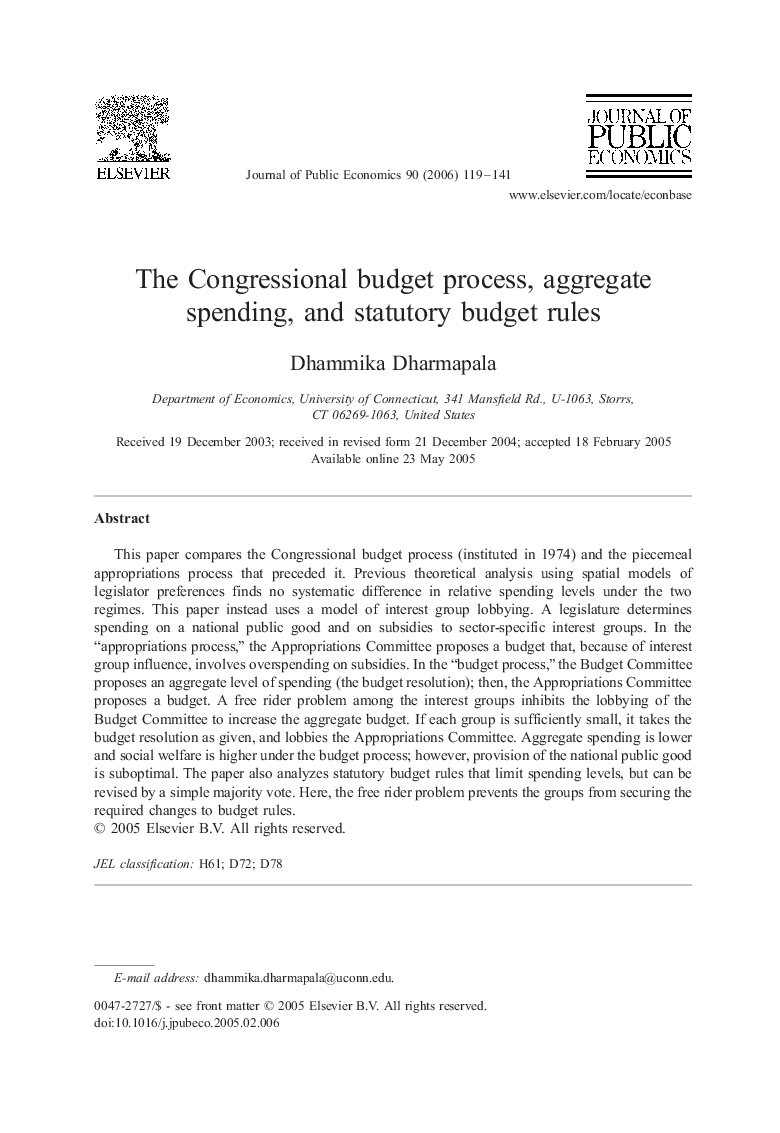| کد مقاله | کد نشریه | سال انتشار | مقاله انگلیسی | نسخه تمام متن |
|---|---|---|---|---|
| 969603 | 1479500 | 2006 | 23 صفحه PDF | دانلود رایگان |

This paper compares the Congressional budget process (instituted in 1974) and the piecemeal appropriations process that preceded it. Previous theoretical analysis using spatial models of legislator preferences finds no systematic difference in relative spending levels under the two regimes. This paper instead uses a model of interest group lobbying. A legislature determines spending on a national public good and on subsidies to sector-specific interest groups. In the “appropriations process,” the Appropriations Committee proposes a budget that, because of interest group influence, involves overspending on subsidies. In the “budget process,” the Budget Committee proposes an aggregate level of spending (the budget resolution); then, the Appropriations Committee proposes a budget. A free rider problem among the interest groups inhibits the lobbying of the Budget Committee to increase the aggregate budget. If each group is sufficiently small, it takes the budget resolution as given, and lobbies the Appropriations Committee. Aggregate spending is lower and social welfare is higher under the budget process; however, provision of the national public good is suboptimal. The paper also analyzes statutory budget rules that limit spending levels, but can be revised by a simple majority vote. Here, the free rider problem prevents the groups from securing the required changes to budget rules.
Journal: Journal of Public Economics - Volume 90, Issues 1–2, January 2006, Pages 119–141